| SWITCH TYPES AND NOMENCLATURE |
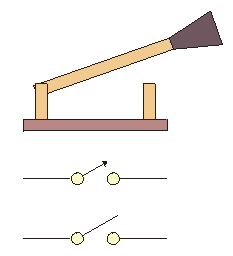 |
This is a Single Pole Single Throw ( SPST ) switch in
the OPEN or OFF
position. |
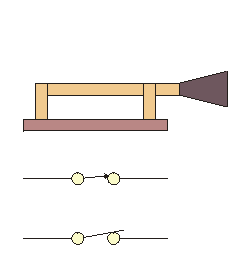 |
This is the same SPST switch in the CLOSED or ON
position. |
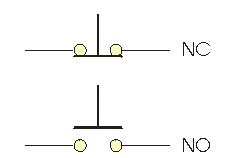 |
This is also a SPST switch even though it appears
different. This is
a momentary push button. The upper example is a Normally Closed ( N.C.
) switch while the one below is a Normally Open ( N.O. ) switch.
The NC switch will be in the ON position until you
press it, then the
circuit opens until you remove your finger. The N.O. switch will be in
the OFF position until you press it, then it will remain ON until you
release
it. A common example of the N.O. Momentary switch is your doorbell
button.
|
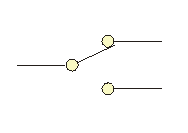 |
This is a Single Pole Double Throw ( SPDT ) switch.
It can connect
the point on the left to either position #1 (top) or position #2
(bottom).
This could be useful in switching between two lamps, selecting high or
low power, or other possibilities. |
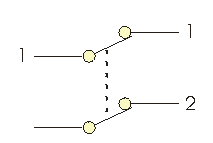 |
This diagram looks very much like two SPST switches
because it is exactly
that. Two SPST switches are joined by a non-conductive material so that
they both open and close at the same time. This is the symbol for the
DPDT
switch as shown in the DPDT Knife Switch above. |
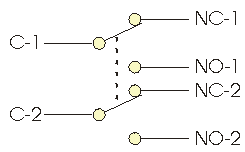 |
This rather complex switch is a DPDT or Double Pole
Double Throw switch.
It can select between two positions and select two circuits at the same
time. This is a very useful switch in robotics for switching direction
on electric motors. It also has many other uses. |